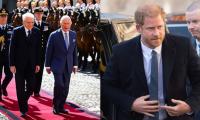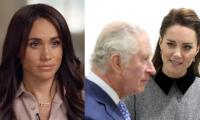Islamiat or Shia Islamiat. It was the prime of Gen Ziaul Haq’s martial rule. He had begun the process of Islamisation of Pakistani laws. Since Islam, like any faith, has multiple interpretations and jurisprudences, Gen Zia and his coterie of religious advisors had to choose an official version for themselves. There were multiple factors that influenced this choice.
The Jamaat-e-Islami, being a part of the martial law government in its initial years, was able to push its own thinking and ideology. Besides, Gen Zia felt very close to Mian Tufail Mohammad, the-then amir of the Jamaat, in terms of both a shared clan and his view of the world. Additionally, due to a certain politics being promoted by the Americans and the Saudis in the whole region during that era, the official faith of the Kingdom of Saudi Arabia could not simply be ignored either by Gen Zia’s military government or his preferred clerics. Therefore, the laws were Islamised according to an orthodox Sunni view of Islam. The Constitution of the Islamic Republic of Pakistan, which was in abeyance for a long time, was amended in a certain ideological way when partially restored during the martial rule.
Gen Ziaul Haq’s version of Islam was not followed or understood by the majority of Sunni Muslims in a country whose practices were historically influenced by the views of Ahmed Raza Khan Barelvi or Sufi saints and poets of South and Central Asia. Even while disagreeing with the official version of faith they were forced to follow, they were neither theologically prepared nor politically organised to take that on. However, Shia Muslims reacted to these injunctions imposed upon them differently. Iran had witnessed a bloody revolution in the name of Islam around the same time. The success of the revolution in Iran inspired many orthodox Muslims belonging to all sects all over the world. But for Shias particularly, their theological base was strengthened and revived. They were more organised as a community and challenged some parts of Gen Zia’s Islamisation. The banking rules, the inheritance laws, the Islamiat syllabus, et al, were to be worked out differently for them. Pakistan inherently became a Sunni Islamic Republic with some inclusive provisions for the Shia sect in its law books and official procedures. It remains unannounced until today but that is pretty much the case.
As boys in their early teens, to recall from my personal memory, we came to know mostly for the first time about many of our Muslim classmates being Shia or Sunni. The divide was visible across the Pakistani society and began to increase at a galloping pace. Rather than bringing Muslims together, in a state founded by a person whose family belonged to two minority Muslim sects, Gen Ziaul Haq’s Islamisation fragmented them. Furthermore, the outfits raised within Pakistan to support the armed struggle in Kashmir were not nurtured on the basis of Kashmiri nationalist rights but the rights of Kashmiris as Muslims. They couldn’t have been raised otherwise anyway, for a non-Kashmiri can only fight for a Kashmiri on the basis of a shared faith. But when you organise people around a faith, they will eventually follow a particular school of thought within that faith. Regrettably, most such outfits became extremist Sunni orthodox outfits over the years.
After the toning down of Pakistan’s support to the rights struggle in Kashmir, these outfits added fuel to the sectarian fire within Pakistan. Sipah-e-Sahaba, committed to converting or eliminating Shia Muslims, was not allowed to organise and operate, it was encouraged by certain elements within the Pakistani establishment. Subsequently, on a smaller scale, Sipah-e-Mohammad was organised by Shias. Sipah-e-Sahaba wreaked sectarian havoc across Pakistan before being banned in 2001, along with Sipah-e-Mohammad, interestingly a little before 9/11, by Gen Pervez Musharraf, another martial ruler, in his Independence Day speech. Sipah-e-Sahaba was organised under a new name soon after and apparently created links with Jundullah, the Taliban and Al-Qaeda. The Shia-Sunni split is countrywide and graffiti against Shias is commonplace. They are killed individually and collectively in Gilgit-Baltistan, Balochistan, Karachi and some parts of Punjab and Khyber-Pakhtunkhwa after being branded profane and devious.
Please also recall that Swat saw the rise of Tehrik-e-Nifaz-e-Shariat-e-Mohammadi (TNSM), led by Sufi Mohammad, in the mid-1990s, who wanted to create a state within a state in the name of faith. The same TNSM resurfaced as an amalgam with the Taliban in 2009. The government initially succumbed to their demands and then struck back. Swat saw massive killings of artists, political activists, and liberal and progressive individuals before the government decided to topple the religious administration in Swat.
Formerly Barelvi Sunnis, now called Ahl-e-Sunnat-wal-Jamaat, and their political outfits like Sunni Tehrik or JUP, have become more militant to secure their turf. Their recent mobilisation in favour of Gen Ziaul Haq’s blasphemy laws is a major example. However, they are seen as adulterators in real Islam by the other Sunni sub-sects. Something alarming that has begun to happen in recent years is the preparation of another battle among Sunnis themselves, between Muqallids and Ghair-Muqallids.
Readers, a column could only offer a snapshot. There is enough body of information available to establish that militant extremism in Pakistan did not begin after 2001 or 2004. We have inherent issues, rooted in our history and political choices, which caused enormous internal strife in the name of faith. This does not mean that the war in Afghanistan or drone attacks in Fata must not end. But it does mean that the end of the war and the end of foreign air incursions will not end militant extremism within Pakistan. Our political leadership needs an entirely different understanding.
Email: harris.khalique@gmail.com
Once products are manufactured and ready for distribution, transportation further contributes to environmental harm
Effective foreign exchange regulation can also help prevent currency manipulation and illicit financial activities
Dr Ishrat had joined Pakistan’s civil service during its most glorious times
Indian govt bid to renegotiate IWT cannot be seen in isolation from dismal state of India-Pakistan ties since 2016
In addition to this, Trump has already ordered further crackdown on immigrants including students
Many women are told to simply 'pray more' or 'stay strong' instead of being encouraged to seek professional help







